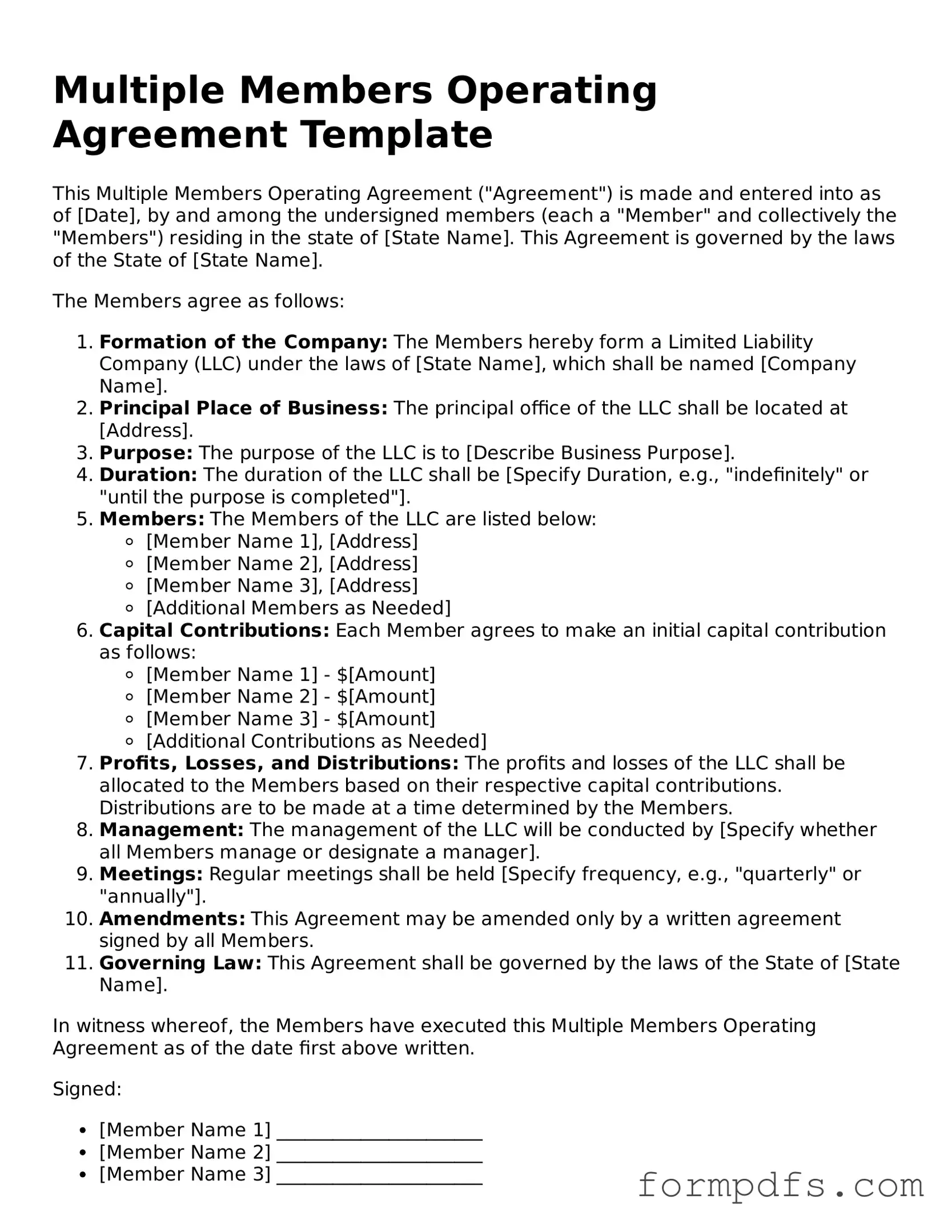What is a Multiple Members Operating Agreement?
A Multiple Members Operating Agreement is a legal document that outlines the management structure and operational guidelines for a limited liability company (LLC) with multiple members. This agreement serves as a foundational framework, detailing the rights, responsibilities, and obligations of each member. It typically addresses issues such as profit distribution, decision-making processes, and procedures for adding or removing members. By clearly defining these elements, the agreement helps to prevent disputes and misunderstandings among members.
Why is it important to have a Multiple Members Operating Agreement?
Having a Multiple Members Operating Agreement is crucial for several reasons. First, it provides clarity and structure to the business operations, ensuring that all members are on the same page regarding their roles and responsibilities. Second, it protects the interests of each member by outlining how profits and losses will be shared. Additionally, this agreement can help shield members from personal liability by reinforcing the LLC's status as a separate legal entity. In essence, it establishes a solid foundation for the business, fostering trust and cooperation among members.
What should be included in a Multiple Members Operating Agreement?
A comprehensive Multiple Members Operating Agreement should include several key components. These typically encompass the names and addresses of the members, the purpose of the LLC, and the duration of the business. It should also detail the capital contributions of each member, the distribution of profits and losses, and the procedures for decision-making. Furthermore, the agreement should outline the process for adding new members or handling the departure of existing ones. Lastly, it is advisable to include provisions for dispute resolution to address any conflicts that may arise in the future.
Can a Multiple Members Operating Agreement be modified after it is created?
Yes, a Multiple Members Operating Agreement can be modified after its initial creation. However, the process for making changes typically requires the consent of all or a majority of the members, depending on the terms outlined in the agreement itself. It is essential for members to communicate openly about any desired changes and to document these modifications formally. This ensures that all members remain informed and that the agreement continues to reflect the current dynamics and needs of the business.
